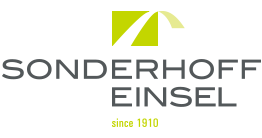Why would the search be necessary?
In Japan, an examination will be conducted not only for the absolute reasons for refusal, but also for the relative reasons for refusal. The reasons for refusal that a trademark is similar to the prior registered trademark of others can frequently be seen in practice.
If one receives a notice of reasons for refusal to the effect that a trademark is similar to the prior registered trademark of others, there may be some cases where such reasons may be dissolved by the measures such as denying the similarity of trademark upon counter-arguing the examiner’s view in an opinion letter and deleting the designated goods/services that infringe the cited trademark upon submitting the amendment, but if the similarity of trademark or designated goods/services could not be argued, then, there may be some cases where the establishment of right has to be given up.
If that is the case, the expenses and time that have been spent for the application would be wasted and also the use of trademark will be seriously interfered. If you use the trademark that was refused due to the similarity of registered trademark of others, then such others’ trademark right could be infringed. Then, the use of trademark that has been used or has been prepared to use could be forced to be suspended and that could lead to serious business loss such as change of the sales plan, re-printing of pamphlets and packages of goods, or, in some cases, collection of goods that have already been on the market.
Thus, due to the following two reasons, i.e.,
i. not to waste the time and expenses for application for registration of trademark;
ii. appraisal of risk of using the trademark, we strongly recommend to conduct the trademark search.
I could not find any problematic trademark in the JPO’s J-Plat Pat or the Worldwide Identical Screening Search (WISS). Should we ask for the trademark search even in a case like this?
In Japan, the trademarks using not only alphabets but also katakana, kanji and other characters are applied and registered and there may be some cases where such trademarks do not hit precisely in those databases that are based on the search using alphabets. Therefore, even if the same or similar trademark is not found in the J-Plat Pat or WISS, the applied trademark could be refused due to the similarity of trademark of others. Also, it is necessary to make a decision at the search in full consideration of the Trademark Examination Guidelines of Japan, therefore, it is essential that the trademark search should be conducted by the professionals with knowledge of practice in Japan.
How will the search of word trademark (i.e. trademark consisting of words) be conducted?
As to the word trademarks, the search will be conducted through the database for trademark search using the sound aspect of trademark. There are some kinds of databases that may be used for trademark search such as J-Plat Pat of the JPO, but our firm conducts the search using the paid database that is exclusively designed for trademarks called “BRANDY” (by Thomson Reuter). BRANDY requires the maintenance cost and it should take time to get used to it, but it should make it possible to conduct highly accurate search. Normally it should take five (5) business days to conduct the search of word trademark (subject to change due to the number of trademarks and international classifications to be searched).
How will the search of figure trademark (i.e. trademark consisting of figures) be conducted?
As to the figure marks, the person in charge of search conducts the search of the trademarks one by one that are abstracted in accordance with the classifications under the Vienna Agreement Establishing an International Classification of the Figurative Elements of Marks. Therefore, it would take more time and cost more comparing with the search of word trademarks and it should require approximately seven (7) to ten (10) business days.
Proposal of Contents of Application based on the Result of Search
If the same or similar trademark is found as a result of the search, there are some cases where the infringement on the prior trademark may be avoided by changing the aspect of indication of trademark or narrowing down the designated goods and services. If a trademark is found that is almost the same as the searched trademark in terms of designated goods and services and if you would like to register/use the searched trademark by any means, we might propose to file a motion for cancellation trial on the basis of non-use or to have negotiations with the owner of the prior trademark.

